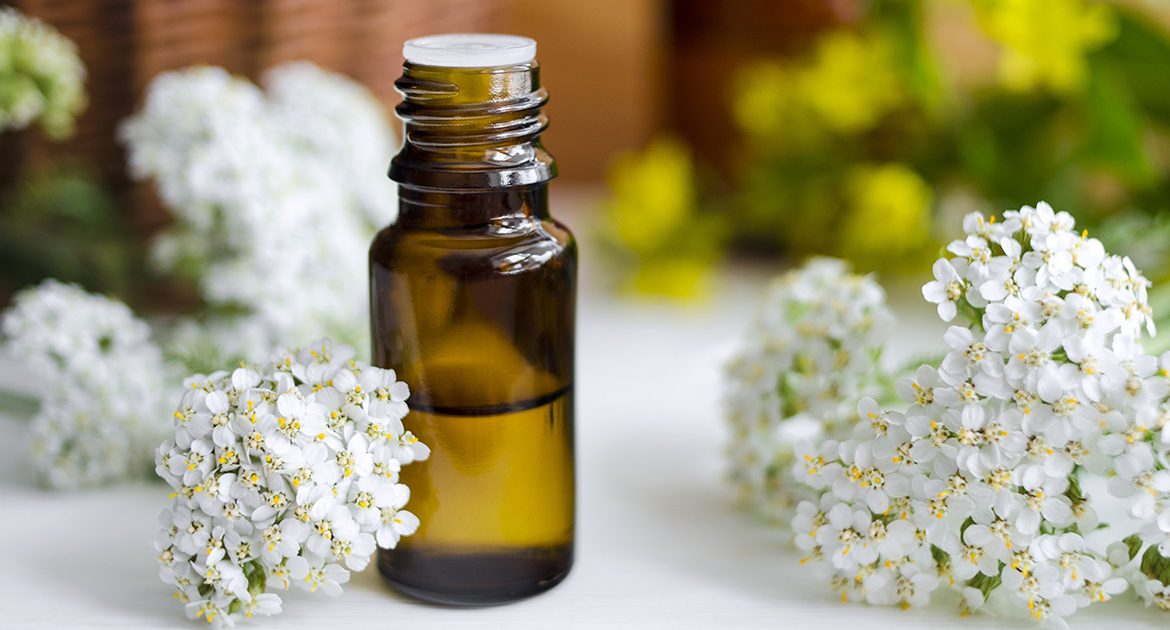
Yarrow (Achillea millefolium) belongs to the Asteraceae family, section Santolinoidea. The genus Achillea have more 100 species in Europe and Asia and a handful in North America which Aboute 19 of them are growing wild in Iran. Yarrow known also as milfoil, nosebleed, thousand leaf, knights’ milfoil, soldier’s woundwort or military herb, is a herbaceous medicinal plant with white or yellow–white and very rarely pink flowers. Yarrow has been used as medicinal herb for a long time. The genus name Achillea honours the Greek hero Achilles, who is said to have used yarrow on the battlefield to staunch the bleeding of his men’s wounds.
Today, yarrow is an important drug used both in folk and official medicine. The plant is also used to flavour beer, wine, and soft drinks, and its tea is consumed as a beverage. Modern science has identified well over a hundred active biological compounds in yarrow. Among the more notable are achilleine (haemostatic), apigenin, luteolin, azulene (anti-inflammatory), camphor, coumarin, inulin, menthol, quercetin, rutin, succinic, salicylic and caffeic acids, and thujone, which is neurotoxic.
This unique plant has a wide range of applications in medicinal as well as cosmetics fields. It is mainly known for its diaphoretic, astringent, tonic, stimulant, mild aromatic, cold amenorrhea, and antiphlogistic effects. The aerial parts of the plants mainly cure phlegm conditions, as a very bitter digestive tonic to encourage bile flow, and as a diuretic.
Distillatin Metode
steam distillation
chamazulene, camphor, 1,8-cineole, linalool, limonene, α –pinene, β-sabinene, gamma terpinene